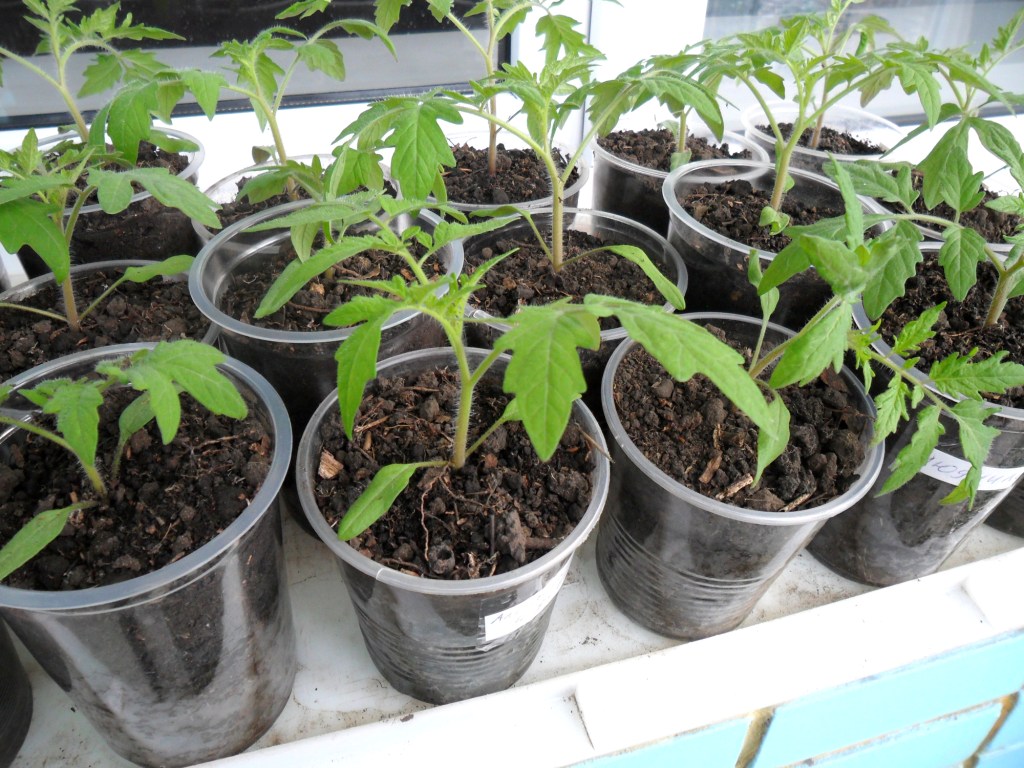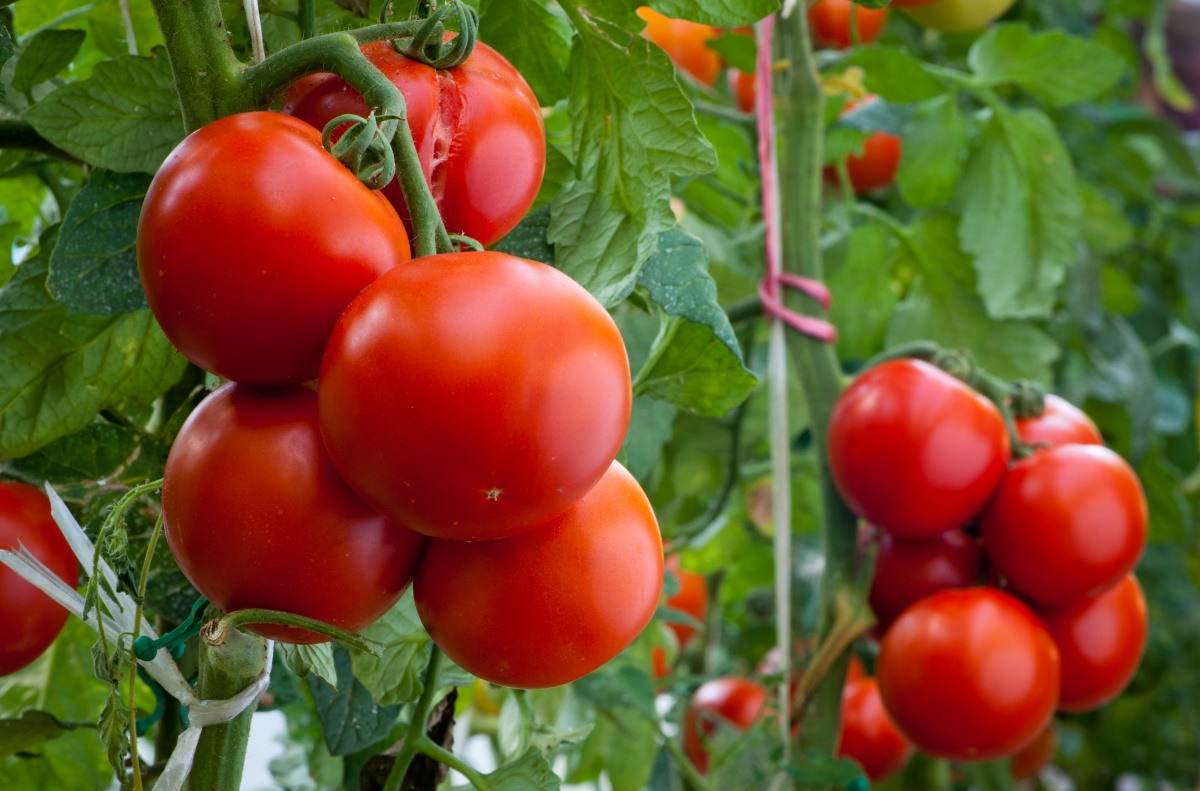The ornamental plant amaranth has not only external beauty, but also many useful properties. It is used as a medicine and green manure, flour, medicinal amaranth oil and livestock feed are made from it. To date, breeders have bred decorative varieties of amaranth, which are used to decorate flower beds in summer cottages.
The plant is unpretentious, as indicated by the name of the flower, which translates as "unfading flower". You can find out about the features of growing it from seeds and care in the open field from our article.
Content
Description of amaranth with photo
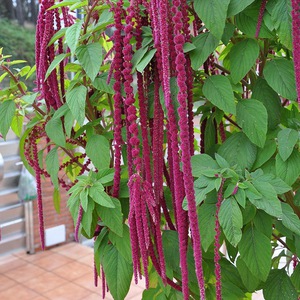 An annual plant with fleshy, simple or branched stems in height can reach from 30 cm to 2-3 meters. His leaves are decorative and can be green, purple and red. The leaf apex has a slight sharpening and a notch, the base is elongated into a petiole. Apical spicate panicles of purple, green, red or golden color are composed of axillary flowers.
An annual plant with fleshy, simple or branched stems in height can reach from 30 cm to 2-3 meters. His leaves are decorative and can be green, purple and red. The leaf apex has a slight sharpening and a notch, the base is elongated into a petiole. Apical spicate panicles of purple, green, red or golden color are composed of axillary flowers.
In nature, there are about 900 species of amaranth, of which no more than seventeen are grown in the gardens of Russia. All of them are unpretentious and grow in almost any weather conditions and on any non-waterlogged soils.
Amaranth: species, varieties, photos
Amaranth tailed. In nature, the plant with powerful, erect stems grows in South America, Asia and Africa. In height, it can reach one and a half meters. Green or purple large leaves are oblong-ovoid... Long paniculate inflorescences consist of globular glomeruli, which in turn are collected from crimson or yellowish-green flowers. Flowering lasts from June to October. The most famous varieties are:
- Grunschwarz is a powerful plant with inflorescences of a light green hue.
- Rothschwants is a bush up to 75 cm high, on the shoots of which red inflorescences are formed.
Amaranth tricolor. An ornamental-deciduous plant is a pyramidal bush with erect stems reaching 70–150 cm. Ovate elongated leaves are painted in three colors at once. It looks unusually beautiful and bright on a sheet plate a combination of red, green and yellow shades. Blooms in early summer and blooms until frost. Popular varieties:
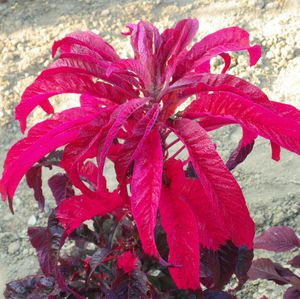 Earley Splendor - a variety with purple-green, almost black lower leaves and bright crimson upper leaves;
Earley Splendor - a variety with purple-green, almost black lower leaves and bright crimson upper leaves;- Aurora - the plant is a bush, the stems of which are covered with beautiful wavy leaves of a golden yellow hue;
- Illumination - the variety is distinguished by spectacular powerful leaves, which at a young age have a red-yellow color, and after a while they turn red-orange.
Amaranth is sad or dark. A small-branched bush with stems up to 1.5 meters differs in purplish green or green pointed leaves oblong-lanceolate. The color of the spike-shaped vertical panicles depends on the variety:
- Green Tamb - a small plant has different tones of an emerald hue;
- Pigmy Torch is a shrub up to 60 cm high with multi-colored leaves and inflorescences, which at first have a dark purple hue, and eventually turn chestnut.
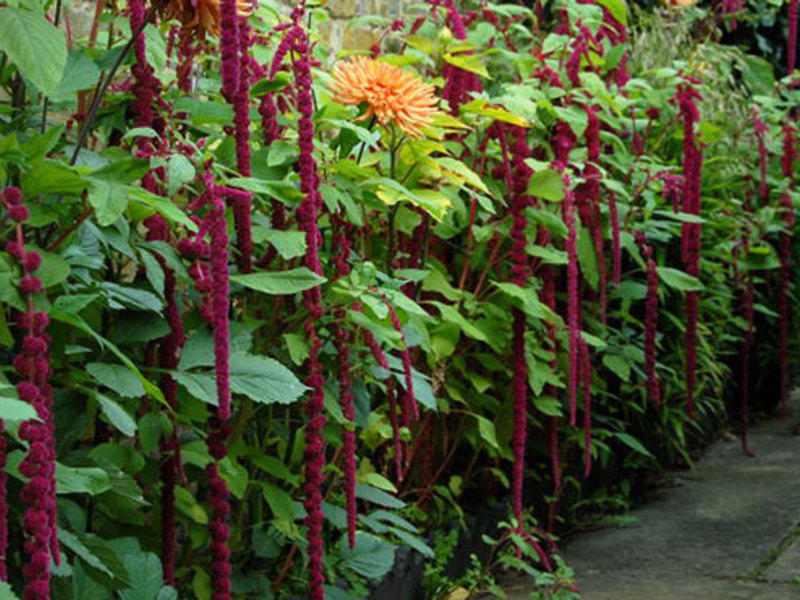

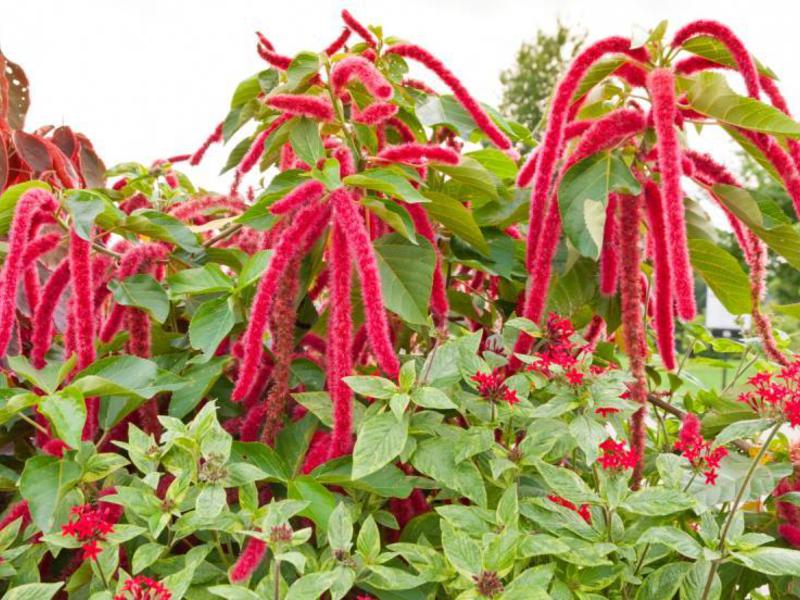
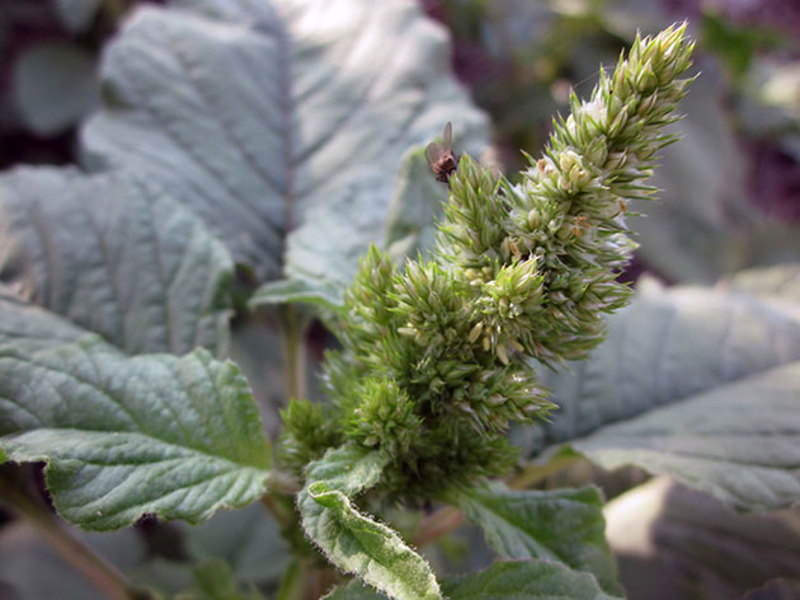
Amaranth crimson or paniculate. The plant with a sharp elongated top and red-brown elongated leaves reaches a height of 75-150 cm. Erect inflorescences consist of small red flowers that bloom in June. Flowering continues until the frost... The species is used to decorate gardens and make bouquets. Among gardeners, the most popular are low-growing varieties of amaranth paniculata:
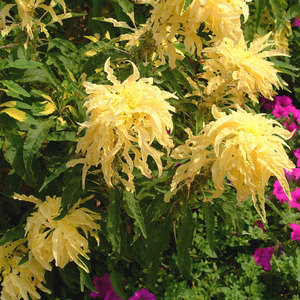 Hot Biscuit is the tallest plant with stems up to one meter in height, green foliage and bright red-orange inflorescences.
Hot Biscuit is the tallest plant with stems up to one meter in height, green foliage and bright red-orange inflorescences.- Grunefakel is a low variety with dark green inflorescences;
- The zwergfakel is 35 cm high and has inflorescences that consist of purple flowers;
- Rother Dam is a medium-sized plant 50 cm high, on the shoots of which dark red leaves grow and maroon flowers are formed.
Amaranth: growing from seed
Amaranth seeds take a long time to enter, so the plant is grown through seedlings or sown in the fall in open ground.
When and how to plant seeds for seedlings?
In regions with harsh winters and short summers seedlings should be started to grow in the first decade of February... Since the days are short in winter, it will need additional highlighting.
You can buy universal soil for planting or mix an earthen mixture from equal parts:
- humus;
- peat;
- turf land.
You should get a loose soil mixture that retains moisture well. To kill pathogenic microflora, the soil is previously spilled with a solution of potassium permanganate or boiling water.
 Seedling boxes with a height of 10 cm or more are filled with damp soil, into which seeds are planted to a depth of about 0.5 cm. From above, they are sprayed with water at room temperature from a spray bottle and covered with glass or polyethylene. In such a greenhouse and at an air temperature not lower than + 22 ° С seedlings will sprout in 4–5 days. They will need to be placed in a well-lit place and the film removed. Seedling care consists in timely watering and thinning the sprouts if they have been sown too thickly.
Seedling boxes with a height of 10 cm or more are filled with damp soil, into which seeds are planted to a depth of about 0.5 cm. From above, they are sprayed with water at room temperature from a spray bottle and covered with glass or polyethylene. In such a greenhouse and at an air temperature not lower than + 22 ° С seedlings will sprout in 4–5 days. They will need to be placed in a well-lit place and the film removed. Seedling care consists in timely watering and thinning the sprouts if they have been sown too thickly.
The diameter of the pots into which young plants will be planted should be at least 12 cm. The pinching of the top when transplanting seedlings will help the plant to strengthen the roots and begin to bush.
When the average air temperature does not drop below +4 degrees, the seedlings can be planted in a garden bed.
Features of planting amaranths in open ground
An unpretentious plant will take root and will grow almost anywhere. But in order to achieve the greatest decorative effect of leaves and long flowering, the site for amaranth is selected in accordance with the following recommendations:
- In a well-lit area, the inflorescences and leaves will have a brighter color.
- It is not recommended to grow shrubs in swampy soils, as the fleshy stems of amaranth can begin to rot. It is desirable to plant in well-drained sandy loam or loamy soils.
- The flower will feel good and grow great in the neighborhood with any other cultures.
It is advisable to prepare the soil for planting seedlings in the fall. It needs to be dug up, cleaned of debris and weeds and fertilized with potassium, phosphorus and humus.
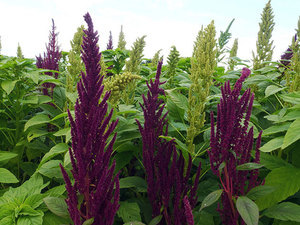 It is necessary to start preparing seedlings for planting in open ground a week before. On these days, their watering gradually decreases and the seedlings are hardened. For this every day pots with young plants carried out to the balcony or garden. On the first day, by one hour, and then the time the seedlings stay in the open air every day increases by another hour. In recent days, seedlings are left in the garden overnight.
It is necessary to start preparing seedlings for planting in open ground a week before. On these days, their watering gradually decreases and the seedlings are hardened. For this every day pots with young plants carried out to the balcony or garden. On the first day, by one hour, and then the time the seedlings stay in the open air every day increases by another hour. In recent days, seedlings are left in the garden overnight.
Amaranth seedlings are planted at a distance of 40-50 cm from each other.For group landing, distance there must be at least 80 cm between the rows for large plants and about 50 cm for undersized plants. The bushes planted in the prepared holes are well watered.
In the future, the plant does not need special care. It will be enough to have abundant, but not frequent watering, removing weeds, periodically loosening the soil and feeding the plant. For this once every 7-10 days amaranths are watered with infusion of wood ash or mullein.
Amaranth after flowering
Under natural conditions, amaranth is a perennial plant, but in our latitudes it does not tolerate any winters. Therefore, in the fall, a plant that has lost its decorative effect is pulled out and disposed of. If it is not susceptible to any disease, then the tops can be folded into the compost pit. The ground part of the plant contains a lot of vitamin C, carotene and protein, so it can be fed to poultry or pigs.
Seed collection
In order not to buy seeds for next year, you can collect your own after the flowering of amaranth. This requires:
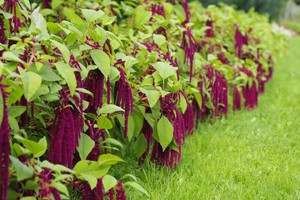 Take some sturdy plants and leave leaves on them.
Take some sturdy plants and leave leaves on them.- As soon as the stem turns whitish, and the lower leaves on it dry up and fall off, cut off the inflorescences from the bush. It is recommended to do this in dry, calm weather.
- The cut inflorescences are placed in a well-ventilated dry room for about a couple of weeks.
- After two weeks or later, when the panicles are well dry, they will need to be rubbed with your hands. During this procedure, seeds will begin to pour out of the boxes. They will need to be sieved through a sieve.
You can store amaranth seeds in a paper bag or box. They do not lose germination for five years.
Since amaranth ornamental plants are beautiful, unpretentious, useful and easy to grow from seeds, they began to gain more and more popularity among gardeners. They decorate flower beds and flower beds, used as a background for flowering plants, or to make a bright spot on the lawn. Even in areas not rich in sun, amaranths will delight with their decorativeness throughout the summer.

